Spinach Lasagna alla Bolognese
By á-178060
Ingredients
- For the Bolognese sauce:
- 2 Tbs. unsalted butter
- 2 small carrots, chopped
- 1 celery stalk, chopped
- 1 yellow onion, chopped
- 2 oz. thick-cut pancetta, chopped
- 1/2 lb. ground pork
- 1/2 lb. ground beef chuck
- 1/2 cup dry red wine such as Barbera
- 1 cup drained, chopped canned plum tomatoes
- 1 to 2 Tbs. tomato paste
- 2 cups beef broth, plus more as needed
- 1 cup milk
- 1 tsp. sea salt
- 1/4 tsp. freshly ground pepper
- 1/8 tsp. freshly grated nutmeg
- For the white sauce:
- 3 cups milk
- 6 Tbs. (3/4 stick) unsalted butter
- 6 Tbs. all-purpose flour
- 1/2 tsp. sea salt
- Spinach Pasta:
- 1 lb. fresh spinach, thick stems removed
- 2 eggs
- 3 About 3 cups unbleached all-purpose flour
- Semolina flour for dusting
- 1 1/2 cups grated Parmigiano-Reggiano cheese
Details
Servings 8
Adapted from williams-sonoma.com
Preparation
Step 1
To make the Bolognese sauce, in a Dutch oven or other large, heavy pot over medium-low heat, melt the butter. Add the carrots, celery, onion and pancetta and cook, stirring occasionally, until the ingredients are tender and rich golden brown, about 30 minutes. If the ingredients are beginning to brown too much, reduce the heat slightly and stir in a spoonful or two of warm water.
Add the ground pork and beef to the pot and stir well. Raise the heat to medium and cook, stirring often and breaking up the meats with a wooden spoon, until they are lightly browned and crumbly and their juices have evaporated, about 20 minutes.
Add the wine and deglaze the pot, scraping up the browned bits from the pot bottom. Cook until the wine evaporates, about 2 minutes. Stir in the tomatoes, 1 Tbs. of the tomato paste, the 2 cups broth, the milk, salt, pepper and nutmeg. Heat the mixture until it just begins to simmer, then reduce the heat to very low and continue to cook, uncovered, stirring occasionally, for about 1 hour. If the sauce seems to be getting too thick or it threatens to scorch, add a little more broth.
Partially cover the pot and continue cooking the sauce on the lowest heat setting until it is thick and dark brown, 1 to 1 1/2 hours more. When the sauce is ready, use a large spoon to skim off and discard any fat floating on the surface.
Use the Bolognese sauce immediately, or let cool, cover and refrigerate in an airtight container for up to 5 days or freeze for up to 2 months.
To make the white sauce, in a saucepan over medium heat, heat the milk until small bubbles appear around the edges of the pan, about 5 minutes. Remove from the heat. Meanwhile, in a heavy nonstick saucepan over medium-low heat, melt the butter. Using a wooden spoon, stir in the flour and cook, stirring constantly, until a thick, smooth paste forms, 3 to 4 minutes. Remove from the heat.
Slowly drizzle 1 to 2 Tbs. of the hot milk into the flour paste while whisking constantly. The mixture will immediately become thick and lumpy. Continuing to whisk vigorously, add the milk about 2 Tbs. at a time. The sauce will gradually become smooth. After adding about 1/2 cup of the milk, slowly add the remaining milk in a thin, steady stream while whisking constantly.
Stir in the salt, return the pan to medium heat and cook, stirring constantly, until the sauce is smooth and thick enough to coat the back of the spoon, about 1 minute.
Use immediately, or let cool, cover and refrigerate in an airtight container for up to 2 days. Reheat over low heat, stirring constantly and adding a little hot water or milk to thin, if necessary.
Lightly flour a rimmed baking sheet.
Rinse the spinach well, drain briefly and place the damp spinach in a large fry pan. Cover and cook over medium heat until the spinach wilts, 2 to 3 minutes. Drain in a sieve under cold running water. When cool, squeeze thoroughly dry.
Place the spinach in a food processor with 1 of the eggs. Process to a smooth puree, stopping once or twice to scrape down the sides of the work bowl.
Place the 3 cups all-purpose flour in a mound on a work surface. Make a well in the center large enough to hold the spinach mixture and the remaining egg, lightly beaten, and place the spinach mixture and egg into the well. Using a fork, begin gradually incorporating some of the flour from the sides, taking care not to break the flour wall. When the egg is no longer runny, you can stop worrying about the wall. Continue working in more flour until the dough is no longer wet.
Begin kneading the dough by hand, adding as much additional all-purpose flour as needed until the dough is smooth and no longer sticky, 2 to 3 minutes. Scoop up any remaining flour and pass it through a sieve to remove any large particles. Set the sieved flour aside.
Dust baking sheets with semolina flour. Divide the dough in half. Keep one half on the work surface, covered with a kitchen towel to prevent it from drying. Set up your pasta machine alongside another work surface. Lightly flour the work surface with some of the reserved sieved flour. Using a rolling pin, flatten the other dough half into a rectangle thin enough to go through the rollers at the widest setting. Pass the dough through the rollers once, then lay the resulting ribbon down on the work surface and flour it lightly. Fold into thirds lengthwise to make a rectangle and flour both sides lightly. Flatten the dough with the rolling pin until it is thin enough to go through the rollers again. With one of the two open edges going first, pass the dough through the rollers nine more times at the widest setting; after each time, flour, fold and flatten the dough as described. After ten trips through the wide rollers, the dough should be completely smooth and supple.
Now you are ready to thin the dough. Starting at the second-to-widest setting, pass the dough through the rollers repeatedly, setting the rollers one notch narrower each time. When the pasta ribbon gets unwieldy, cut it in half and continue rolling one part at a time until the dough reaches the desired thinness.
Arrange the finished pasta sheets on the prepared baking sheets and cover with kitchen towels to prevent drying. Repeat the entire process with the second half of the dough. Cut the pasta by hand or machine as desired. Makes 1 1/2 lb. dough.
Make the pasta dough according to the recipe, then divide and roll out each piece into a sheet 1/16 inch thick. Lay the pasta sheet on a lightly floured work surface and, using a knife or pastry wheel, cut into sections about 12 inches long (they will lengthen slightly as they cook). Layer the sections on the prepared baking sheet, spacing them so they don’t touch and separating each layer with a lightly floured kitchen towel.
Preheat an oven to 375°F. Butter a 10-by-13-by-2-inch baking dish. Set aside 1/2 cup of the white sauce and 1/4 cup of the cheese.
Layer pasta sheets in the bottom of the pan, overlapping the pieces slightly. Spread with a thin layer of white sauce and top with a layer of Bolognese sauce. Sprinkle with about 1/4 cup of the cheese. Repeat the layering, creating as many layers as you can and ending with a pasta layer. Spread the top pasta layer with the reserved white sauce and sprinkle with the reserved cheese. The dish can be assembled up to this point, covered and refrigerated for up to 24 hours before baking.
Bake the lasagna for 40 minutes, then check it. If the top is browning too rapidly, cover the pan loosely with aluminum foil. Continue to bake until the sauce is bubbling around the edges and a knife inserted in the center comes out warm to the touch, about 15 minutes longer. If the dish has been refrigerated, you may need to add up to 30 minutes to the cooking time. Remove the dish from the oven, place on a wire rack, and let rest for 15 minutes before serving.
You'll also love
-
 Bean and Corn Salsa
4.4/5
(8 Votes)
Bean and Corn Salsa
4.4/5
(8 Votes)
-
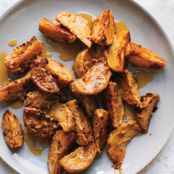 Miso-Glazed Turnips
4/5
(14 Votes)
Miso-Glazed Turnips
4/5
(14 Votes)
-
 Kale Salad with Mango and Coconut
3.8/5
(10 Votes)
Kale Salad with Mango and Coconut
3.8/5
(10 Votes)
-
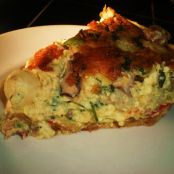 Creamy Lobster Bacon Spinach Quiche
4.2/5
(13 Votes)
Creamy Lobster Bacon Spinach Quiche
4.2/5
(13 Votes)
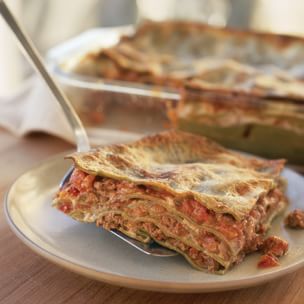
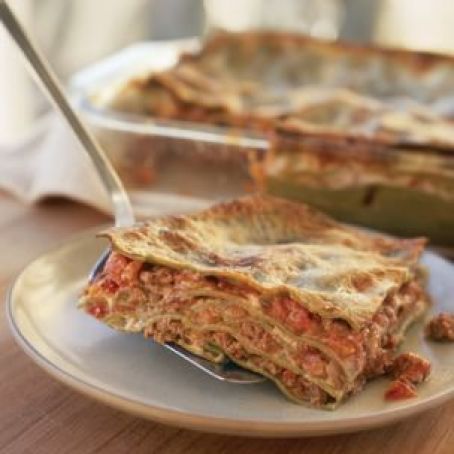
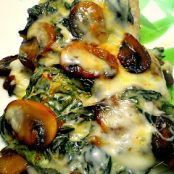
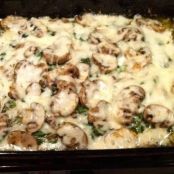
Review this recipe